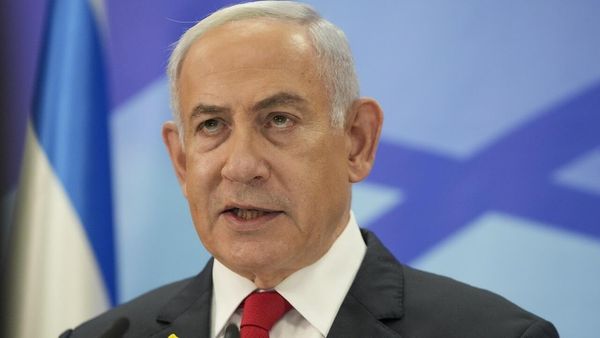
The Kremlin is pressing its advantage with a White House that is impatient to show that Donald Trump is the only leader who can deliver peace in the Kremlin’s war against Ukraine.
At first blush, the deal agreed by US negotiators in Saudi Arabia on Tuesday offers concession on concession to the Kremlin, leaving observers to question whether Russia had given anything to secure its first offer of sanctions relief since the beginning of the war.
Russia and Ukraine have agreed to a moratorium on attacking each other’s ships in the Black Sea – a theatre of the war where Ukraine’s use of seaborne drones and special operations units had put the Russians on the defensive, largely penning the Russian fleet close to the shore.
But the White House account of the agreement did not even include the fine print. In its readout, the Kremlin said that it would only implement the Black Sea ceasefire once the US delivers sanctions relief on Russian agricultural products and fertilisers, as well as delisting a major state-owned bank called Rosselkhozbank that services the Russian agricultural industry.
That would be the first significant rollback of sanctions on Russia since the war began, and indicates that Moscow will seek a dual price to halt its war against Ukraine: political and military concessions from Ukraine as well as an escape from the international isolation that began after its full-scale invasion in 2022.
And, so far, it looks like that is a deal that the Trump administration is willing to make.
“The ‘Russian art of the deal’ is selling Russian demands as Russian concessions to the Americans, and then demand sanctions relief on top,” wrote Dr Janis Kluge, a researcher who focuses on the Russian economy at the German Institute for International and Security Affairs, a thinktank. “The demand here is that Ukraine is not allowed to attack Russian warships any more and Russia gets to inspect Ukrainian ships.”
Any sanctions relief on Russia will be limited by the readiness of Europe to take similar steps – but Tuesday’s deal still reflects a serious reorientation of the diplomacy around Ukraine and leaves Europe more isolated in restraining Russia.
Ukraine had opposed any rollback on sanctions against the Kremlin. President Volodymyr Zelenskyy said that he considered it to be a “weakening of our position and the easing of sanctions” against Russia, a position that was not compatible with an “unconditional ceasefire” against energy infrastructure and at sea.
It also appears that either the White House hid the plans to ease sanctions – or US negotiators were themselves surprised by the Russian demand that limits on trade and finance be eased in order to achieve the main deliverable that the White House wants: the ability to declare even a partial ceasefire in Ukraine.
“This wasn’t in the agenda before the meeting,” Zelenskyy said on Tuesday. “The Russians, as far as we know, have raised the issue of the American assistance to transport their agricultural products … We didn’t agree to that so that it would be in our common [statement].”
Zelenskyy sought to sound upbeat during his remarks, and said that at least now Kyiv could appeal to the White House if Russia chose to violate the ceasefire against Ukraine in the coming month. Ukraine could also demand new sanctions against Russia if that happens, he said.
But there are considerable doubts that Trump would be ready to slap further sanctions on Russia. And Steve Witkoff, his envoy, has spent “really a lot of time in dialogue with Putin”, said Zelenskyy, explaining why the White House messaging on the war sounds so much like the Kremlin narrative.
In negotiations, a deal that does not work for both sides will collapse sooner or later. Tuesday’s agreement – and the separate statements that have emerged – will raise further questions of whether the US can mediate a conflict in which it appears to clearly sympathise with the Kremlin.







